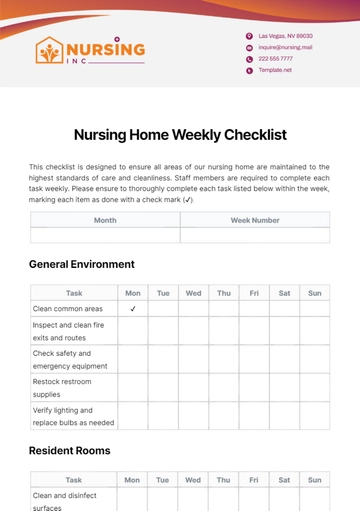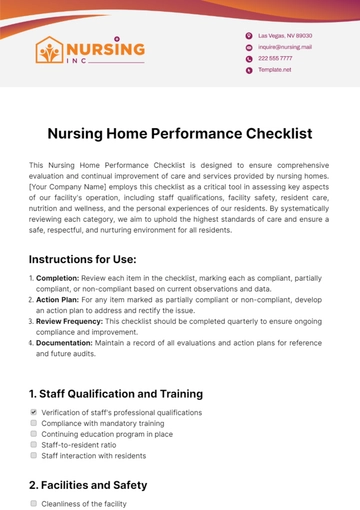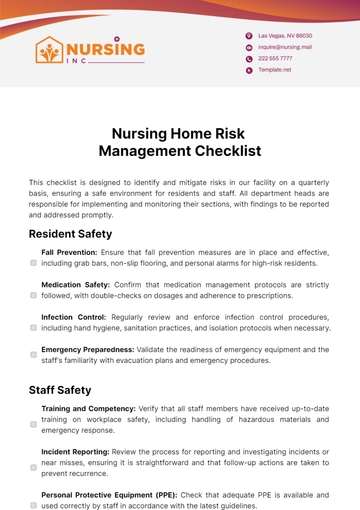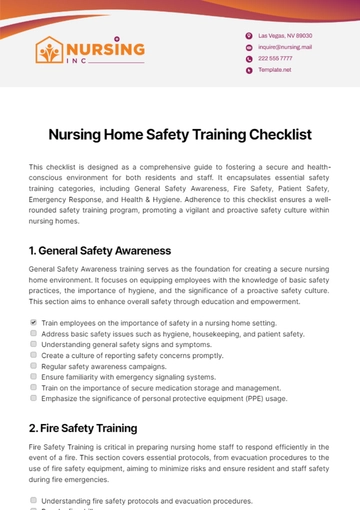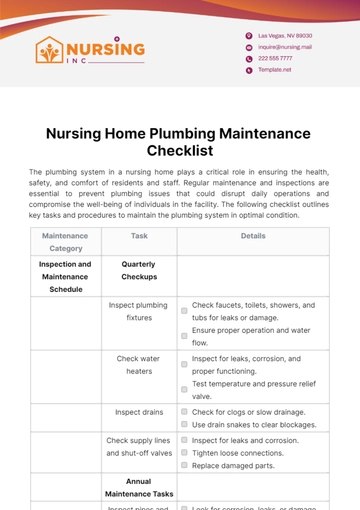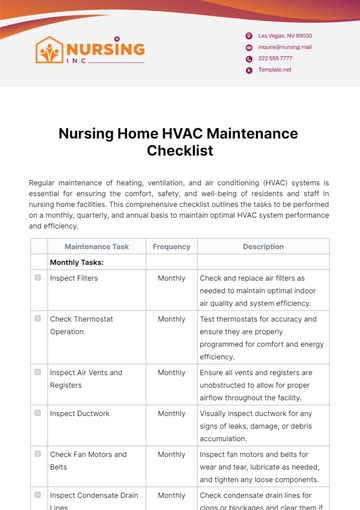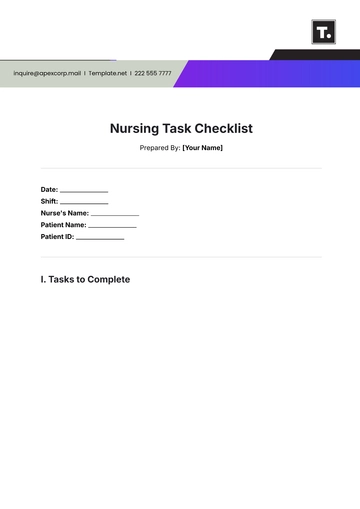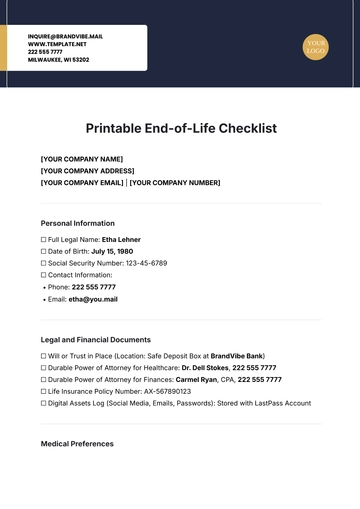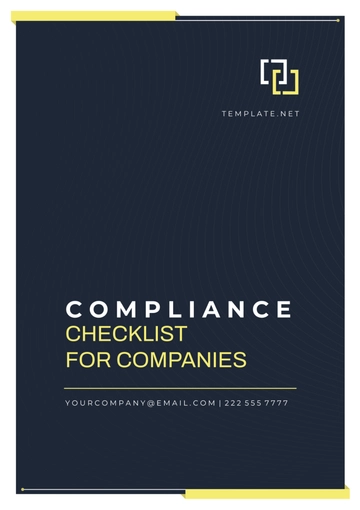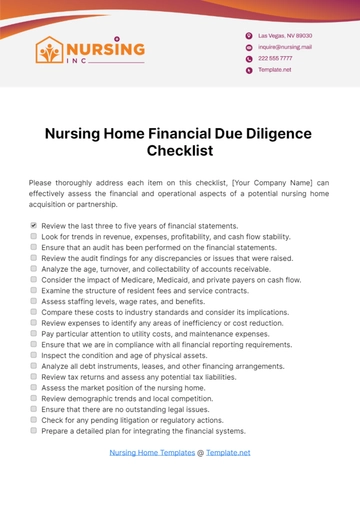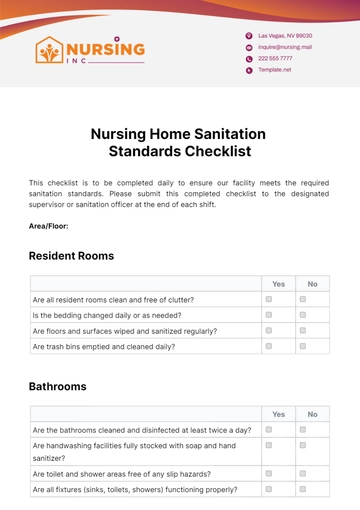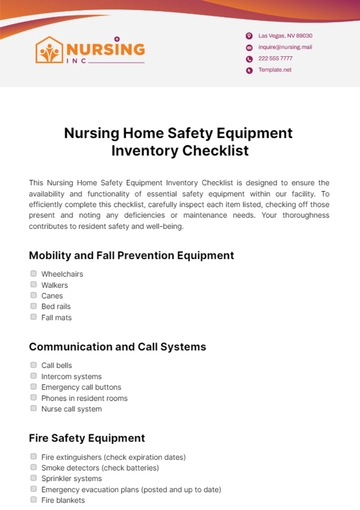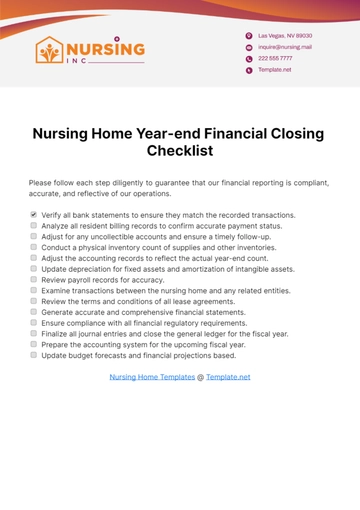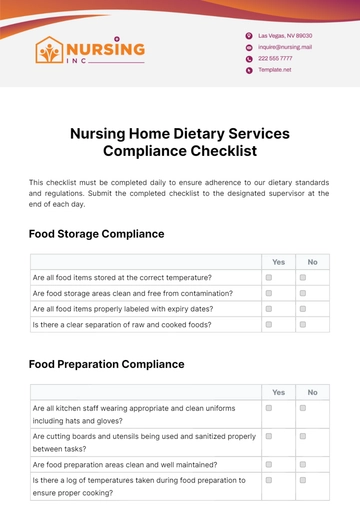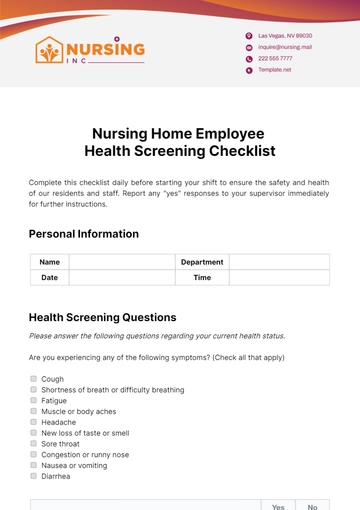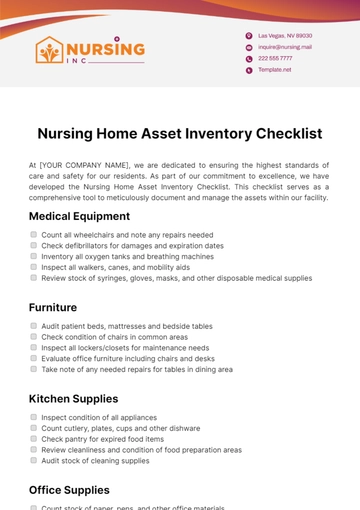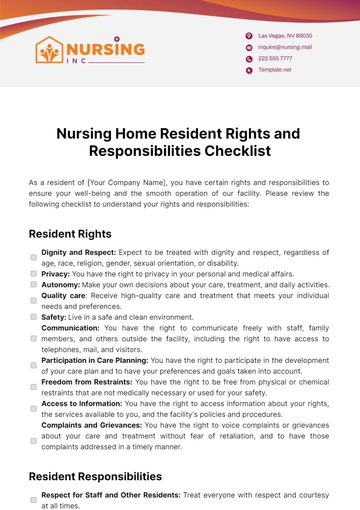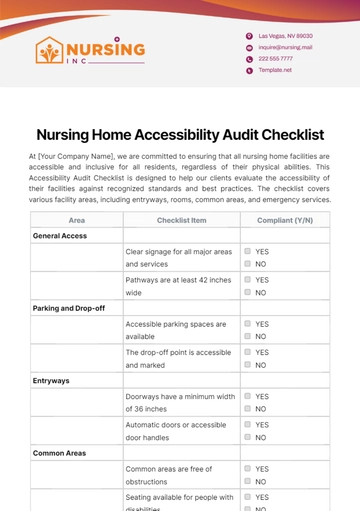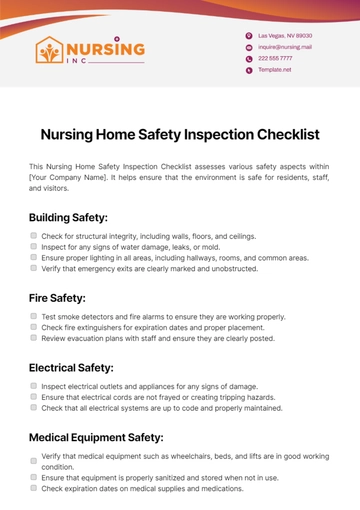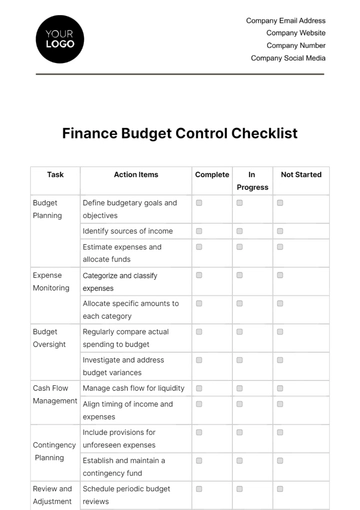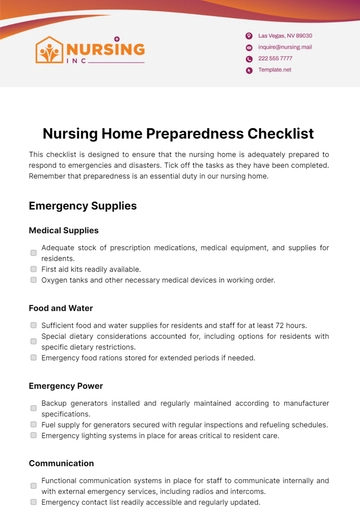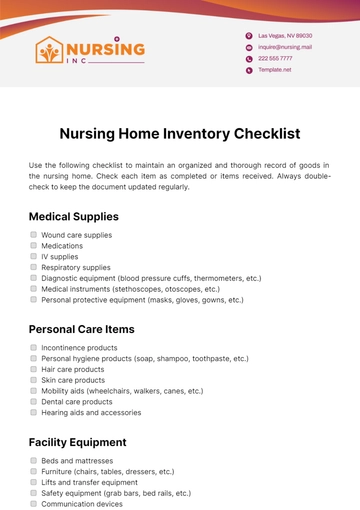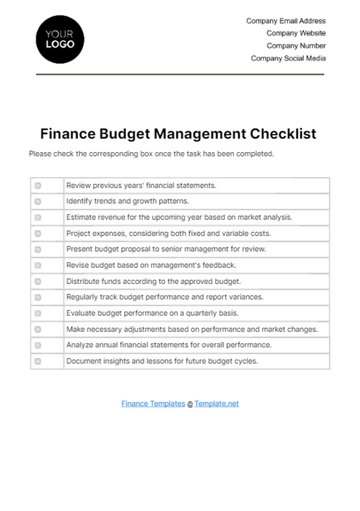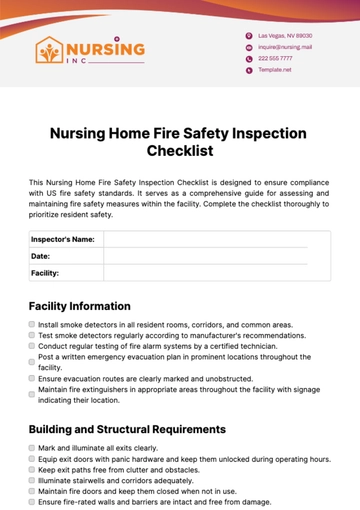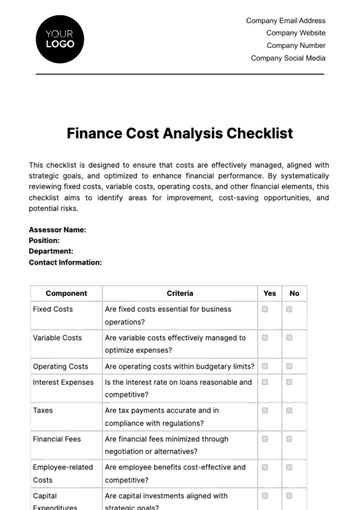Free Nursing Home Preparedness Checklist
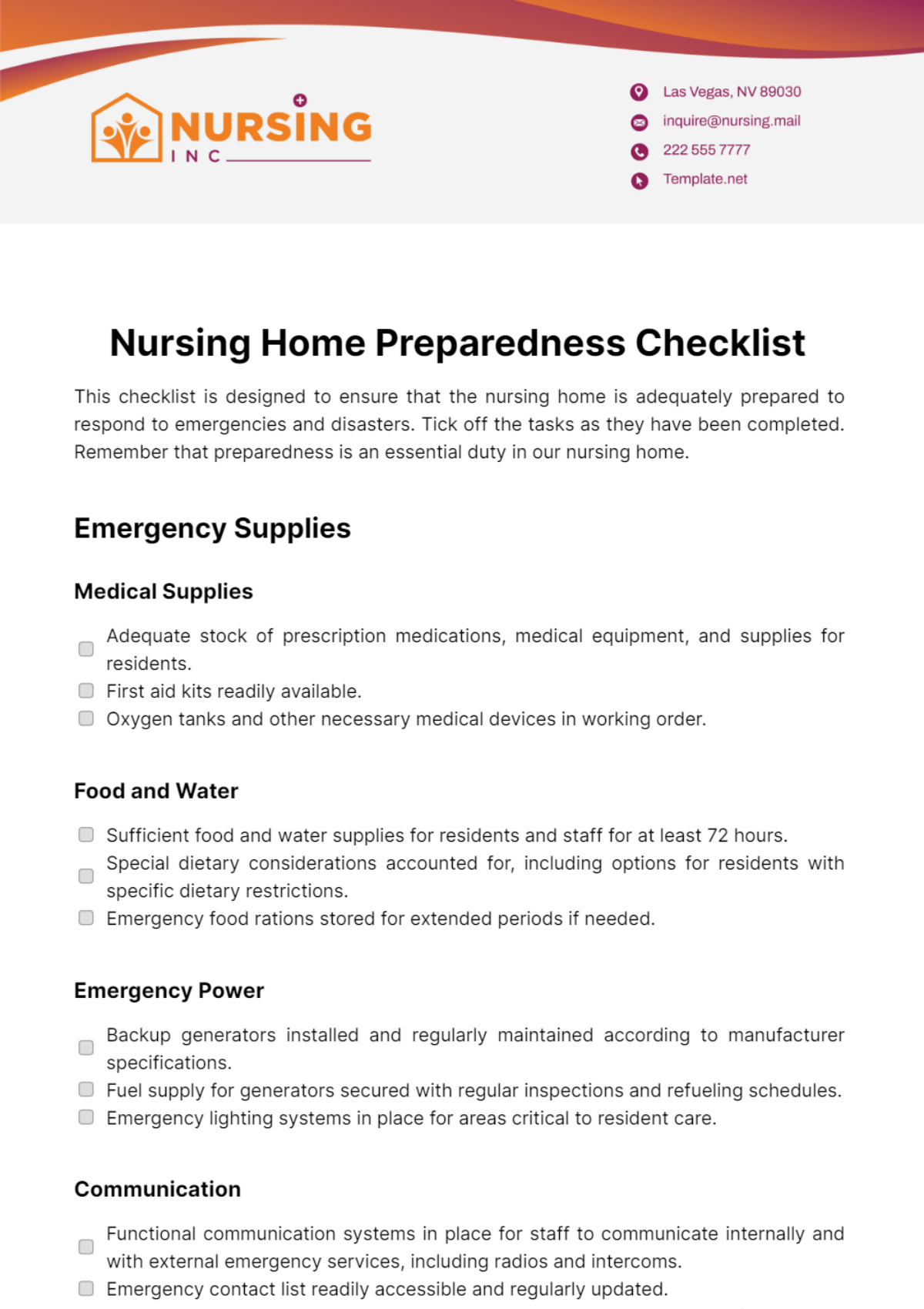
This checklist is designed to ensure that the nursing home is adequately prepared to respond to emergencies and disasters. Tick off the tasks as they have been completed. Remember that preparedness is an essential duty in our nursing home.
Emergency Supplies
Medical Supplies
Adequate stock of prescription medications, medical equipment, and supplies for residents.
First aid kits readily available.
Oxygen tanks and other necessary medical devices in working order.
Food and Water
Sufficient food and water supplies for residents and staff for at least 72 hours.
Special dietary considerations accounted for, including options for residents with specific dietary restrictions.
Emergency food rations stored for extended periods if needed.
Emergency Power
Backup generators installed and regularly maintained according to manufacturer specifications.
Fuel supply for generators secured with regular inspections and refueling schedules.
Emergency lighting systems in place for areas critical to resident care.
Communication
Functional communication systems in place for staff to communicate internally and with external emergency services, including radios and intercoms.
Emergency contact list readily accessible and regularly updated.
Backup communication methods established in case primary systems fail, such as satellite phones or mobile hotspots.
Staff Preparedness
Training
Regular training sessions for staff on emergency procedures and protocols, including fire drills and evacuation procedures.
Staff familiar with roles and responsibilities during emergencies through scenario-based training exercises.
Continuing education programs to keep staff updated on the latest emergency response protocols and techniques.
Staffing Plan
Adequate staffing levels ensured during emergencies with contingency plans for unexpected absences.
Cross-training initiatives implemented to ensure staff members can fulfill multiple roles during emergencies.
Staff deployment strategies developed to prioritize critical areas of resident care during emergencies.
Personal Protective Equipment (PPE)
Sufficient PPE available for staff to use during emergencies, including masks, gloves, gowns, and eye protection.
Regular inventory checks conducted to ensure an adequate supply of PPE at all times.
Proper training provided to staff on the correct usage and disposal of PPE to minimize infection risks.
Resident Safety
Evacuation Plan
Clearly defined evacuation routes and procedures posted throughout the facility and reviewed regularly with staff.
Regular evacuation drills conducted to familiarize residents and staff with emergency procedures.
Plans in place for transporting residents safely, including those with mobility issues, using evacuation chairs or other specialized equipment.
Medical Records
Backup copies of residents' medical records stored securely and accessible during emergencies through electronic or physical means.
Digital medical record systems equipped with redundancy measures to ensure data integrity during emergencies.
Protocols established for transferring medical records securely in the event of facility evacuation.
Comfort and Support
Plans for providing emotional support and reassurance to residents during emergencies, including access to counseling services if needed.
Comfort items readily available, such as blankets, pillows, and personal belongings, to help residents cope with stress and anxiety.
Regular check-ins conducted by staff to assess residents' well-being and address any concerns or needs promptly.
Facility Infrastructure
Building Safety
Regular inspections of building structures conducted to ensure compliance with safety regulations and identify potential hazards.
Emergency exits clearly marked and kept clear of obstructions at all times.
Structural reinforcements in place to mitigate risks from earthquakes, hurricanes, or other natural disasters.
Environmental Controls
Systems in place to maintain appropriate temperatures and ventilation during emergencies, including backup HVAC systems.
Plans for addressing environmental hazards such as flooding, power outages, or extreme temperatures, with designated staff responsible for monitoring conditions.
Emergency response protocols established for hazardous material spills or other environmental emergencies.
Utilities
Backup systems for water, heating, and cooling in place with regular testing and maintenance schedules.
Emergency shut-off valves clearly labeled and easily accessible to staff in case of utility failures.
Plans for securing alternative water sources, such as water tanks or portable water filtration systems, in case of water supply disruptions.
- 100% Customizable, free editor
- Access 1 Million+ Templates, photo’s & graphics
- Download or share as a template
- Click and replace photos, graphics, text, backgrounds
- Resize, crop, AI write & more
- Access advanced editor
Prepare for emergencies effectively with the Nursing Home Preparedness Checklist Template from Template.net! This editable and adaptable resource helps in assessing and enhancing emergency preparedness measures within your nursing home. Utilize the customizable fields and AI Editor Tool to tailor the checklist to address specific emergency scenarios, ensuring comprehensive preparedness!
You may also like
- Cleaning Checklist
- Daily Checklist
- Travel Checklist
- Self Care Checklist
- Risk Assessment Checklist
- Onboarding Checklist
- Quality Checklist
- Compliance Checklist
- Audit Checklist
- Registry Checklist
- HR Checklist
- Restaurant Checklist
- Checklist Layout
- Creative Checklist
- Sales Checklist
- Construction Checklist
- Task Checklist
- Professional Checklist
- Hotel Checklist
- Employee Checklist
- Moving Checklist
- Marketing Checklist
- Accounting Checklist
- Camping Checklist
- Packing Checklist
- Real Estate Checklist
- Cleaning Checklist Service
- New Employee Checklist
- Food Checklist
- Home Inspection Checklist
- Advertising Checklist
- Event Checklist
- SEO Checklist
- Assessment Checklist
- Inspection Checklist
- Baby Registry Checklist
- Induction Checklist
- Employee Training Checklist
- Medical Checklist
- Safety Checklist
- Site Checklist
- Job Checklist
- Service Checklist
- Nanny Checklist
- Building Checklist
- Work Checklist
- Office Checklist
- Training Checklist
- Website Checklist
- IT and Software Checklist
- Performance Checklist
- Project Checklist
- Startup Checklist
- Education Checklist
- Home Checklist
- School Checklist
- Maintenance Checklist
- Planning Checklist
- Manager Checklist
- Wedding Checklist
- Vehicle Checklist
- Travel Agency Checklist
- Vehicle Inspection Checklist
- Interior Design Checklist
- Backpacking Checklist
- Business Checklist
- Legal Checklist
- Nursing Home Checklist
- Weekly Checklist
- Recruitment Checklist
- Salon Checklist
- Baby Checklist
- Equipment Checklist
- Trade Show Checklist
- Party Checklist
- Hospital Bag Checklist
- Evaluation Checklist
- Agency Checklist
- First Apartment Checklist
- Hiring Checklist
- Opening Checklist
- Small Business Checklist
- Rental Checklist
- College Dorm Checklist
- New Puppy Checklist
- University Checklist
- Building Maintenance Checklist
- Work From Home Checklist
- Student Checklist
- Application Checklist

